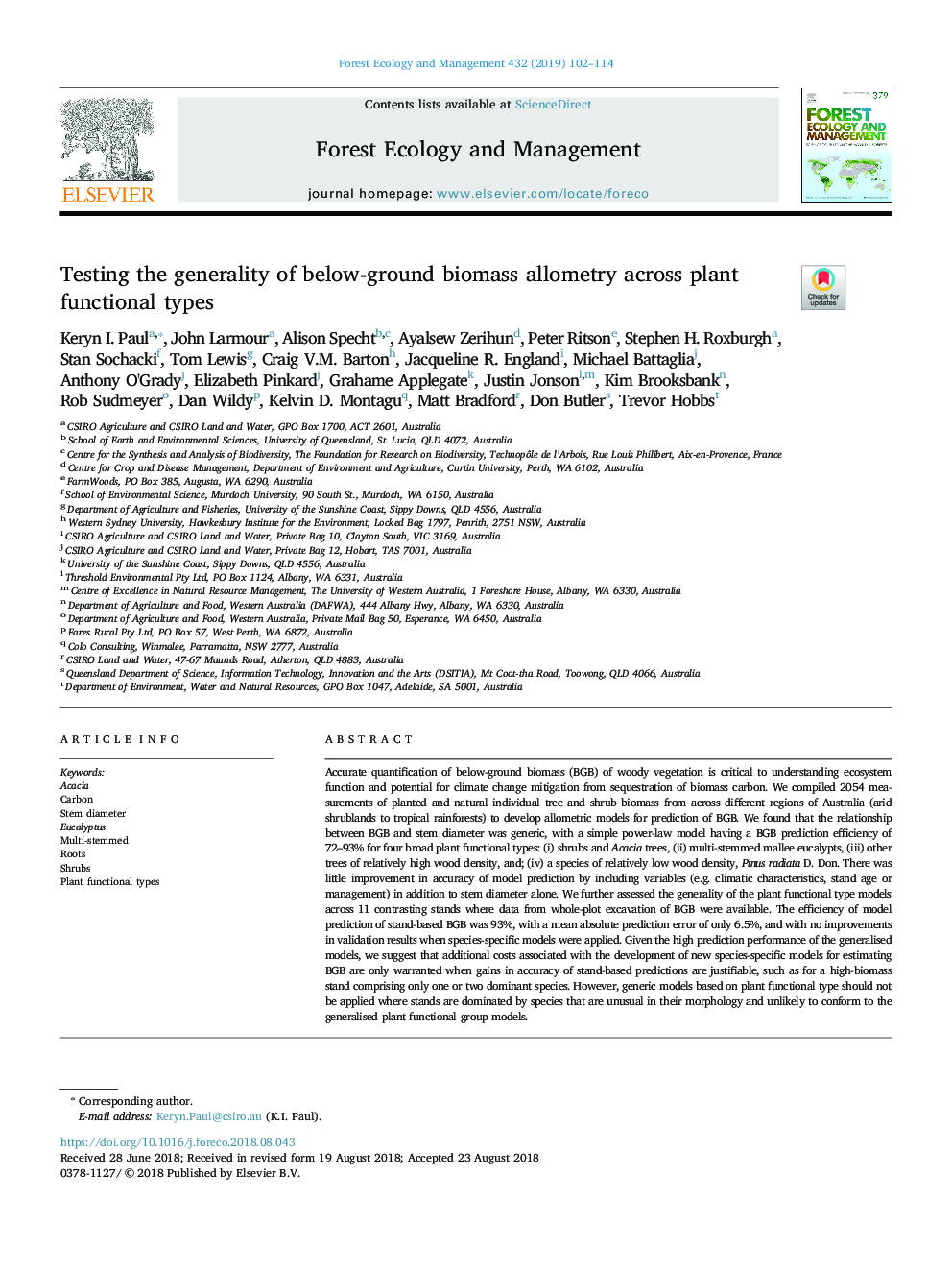| کد مقاله | کد نشریه | سال انتشار | مقاله انگلیسی | نسخه تمام متن |
|---|---|---|---|---|
| 10150042 | 1662523 | 2019 | 13 صفحه PDF | دانلود رایگان |
عنوان انگلیسی مقاله ISI
Testing the generality of below-ground biomass allometry across plant functional types
ترجمه فارسی عنوان
تست عمومیت آلومتریایی زیست توده زمین زیر زمین در تمام انواع کارخانه های گیاهی
دانلود مقاله + سفارش ترجمه
دانلود مقاله ISI انگلیسی
رایگان برای ایرانیان
کلمات کلیدی
آکاسیا، کربن، قطر ساقه، اکالیپتوس، چند پایه، ریشه ها، درختچه ها، نوع عملکرد کارخانه،
موضوعات مرتبط
علوم زیستی و بیوفناوری
علوم کشاورزی و بیولوژیک
بوم شناسی، تکامل، رفتار و سامانه شناسی
چکیده انگلیسی
Accurate quantification of below-ground biomass (BGB) of woody vegetation is critical to understanding ecosystem function and potential for climate change mitigation from sequestration of biomass carbon. We compiled 2054 measurements of planted and natural individual tree and shrub biomass from across different regions of Australia (arid shrublands to tropical rainforests) to develop allometric models for prediction of BGB. We found that the relationship between BGB and stem diameter was generic, with a simple power-law model having a BGB prediction efficiency of 72-93% for four broad plant functional types: (i) shrubs and Acacia trees, (ii) multi-stemmed mallee eucalypts, (iii) other trees of relatively high wood density, and; (iv) a species of relatively low wood density, Pinus radiata D. Don. There was little improvement in accuracy of model prediction by including variables (e.g. climatic characteristics, stand age or management) in addition to stem diameter alone. We further assessed the generality of the plant functional type models across 11 contrasting stands where data from whole-plot excavation of BGB were available. The efficiency of model prediction of stand-based BGB was 93%, with a mean absolute prediction error of only 6.5%, and with no improvements in validation results when species-specific models were applied. Given the high prediction performance of the generalised models, we suggest that additional costs associated with the development of new species-specific models for estimating BGB are only warranted when gains in accuracy of stand-based predictions are justifiable, such as for a high-biomass stand comprising only one or two dominant species. However, generic models based on plant functional type should not be applied where stands are dominated by species that are unusual in their morphology and unlikely to conform to the generalised plant functional group models.
ناشر
Database: Elsevier - ScienceDirect (ساینس دایرکت)
Journal: Forest Ecology and Management - Volume 432, 15 January 2019, Pages 102-114
Journal: Forest Ecology and Management - Volume 432, 15 January 2019, Pages 102-114
نویسندگان
Keryn I. Paul, John Larmour, Alison Specht, Ayalsew Zerihun, Peter Ritson, Stephen H. Roxburgh, Stan Sochacki, Tom Lewis, Craig V.M. Barton, Jacqueline R. England, Michael Battaglia, Anthony O'Grady, Elizabeth Pinkard, Grahame Applegate, Justin Jonson,
